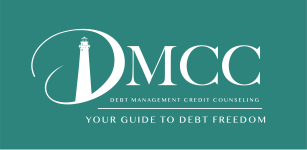What to do with your tax refund
Expecting a hefty tax refund this year? You may have visions of plasma televisions and Hawaiian vacations. But with the economy locked in recession and the unemployment rate at a 25-year high, there might be more practical ways to spend the extra cash.
In past years, tax refund splurges were common. But this year is different. A handful of personal finance experts were asked to weigh in on how your priorities ought to stack up in today’s economy.
Build up emergency savings. Given the precarious labor market right now, building up a reserve fund of cash ought to be a top priority.
“If you have lost or think you are going to lose your job, then just put that money in the bank,” said Beth Gamel, CPA/PFS at Pillar Financial Advisors. “If you are not in that situation – you have a job, and it looks pretty secure – you still should look at your cash reserve,” she added.
Gamel said that risks associated with living paycheck to paycheck are higher now than before the recession, because banks are more reluctant to extend lines of credit to people with less-than-perfect credit histories.
So which should you do first – pay off debt or save for emergencies? Greg Plechner, CFP with Modera Wealth Management, said that while he recommends people have 6 to 9 months of expenses available in cash, the decision to pay down debt or accrue a reserve fund is a matter of interest rates.
Invest for the long term. While stocks have started to climb back from multi-year lows, the major indexes still have a lot of growing room, and now is the time to take advantage.
Gordon Bernhardt, CFP and CEO at Bernhardt Wealth Management, recommends that if an individual has no credit card debt, this is a very good time to get into the market, by opening up a brokerage account or a tax-advantaged retirement account like an IRA.
If you’ve got at least 5-10 years before you’ll need the cash, then investing for the future – particularly for your retirement – is a smart move today.
“I am extremely positive that 5 years from now, the market is going to be a lot higher,” said Bernhardt.
To protect yourself from volatility, Bernhardt recommends you “take that money and buy an index fund – that is going to be the easiest way [to] get diversification at a low cost.”
Refinance. For those without debt and job insecurity, lowering monthly housing payments might be the way to go. Lending rates are at record lows, and by locking in a lower rate, you save money every month, said Plechner.
“You need between $2000 and $3000 to refinance – those are the typical closing costs,” said Plechner, although total costs can vary greatly depending on your home’s value. Using your tax refund to pay for all or part of the refinance “would be a great use of the money and that would increase your monthly cash flow.”
But refinancing doesn’t make sense for everyone. For example, you should be able to knock at least a percentage point from your current rate to justify the cost. Plus, you need to have home equity and your credit needs to be good enough to qualify for the lowest rates, Plechner said. To figure out whether refinancing is right for you, try an online calculator like the one on Bankrate.com.
Contribute to a 529 College Savings Plan. If you have children and are planning to set aside something for their future education costs, then consider opening and contributing to a state sponsored college savings plan. In these education savings plans, the savings can grow and be used tax-free when withdrawn for qualified education expenses. You may even receive a deduction on your state income tax return if you contribute to your own state’s savings plan.
Make extra principal payments on your mortgage. By making just one additional payment on a 30 year mortgage each year, you can have the mortgage paid off in about 17 years and save thousands of dollars in interest over that time.
www.money.cnn.com
Return to Thrifty Spending Issue 103
